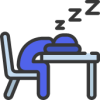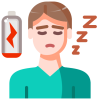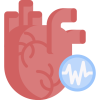- 7777 Southwest Fwy, Ste. 640 Houston, TX 77074
- Phone : (713) 270-0477
- Fax : (713) 270-7655
Pharyngeal airways collapse due to the negative pressure generated during the inspiration overcoming
the pharyngeal dilator muscles.
Prevalence rates have increased substantially over the last two decades, most likely due to the obesity epidemic. 2% – 9% of adults are affected by OSA (~22 million Americans)


















7777 Southwest Freeway Suite 640
Houston TX 77074
Ph: (713) 270-0477
Fax: (713) 270-7655
9180 Pinecroft Suite 250
Woodlands TX 77380
Ph: (713) 270-0477
Fax: (713) 270-7655
21386 Provincial Blvd
Katy Texas 77450
Ph: (713) 270-0477
Fax: (713) 270-7655